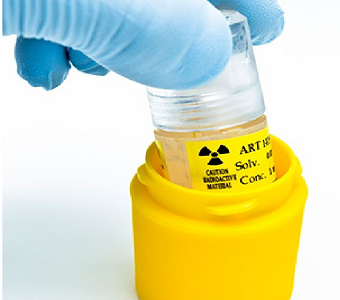Zogenix (ZGNX) expects to net $56 million from a secondary offering revealed on November 4, $64.4 million with full exercise of the underwriter’s over-allotment option. The offering did not come as a major surprise to most investors, although PropThink had speculated that the company might partner up for the commercialization of Zohydro ER prior to executing a financing. Clearly, ZGNX took advantage of existing demand in front of potential co-promote discussions – we’re told that the offering was oversubscribed by nearly 2.5x, not particularly surprising given the deal’s discount to market (ZGNX traded over $3.00 in the previous week) and company’s newly approved opioid product, Zohydro ER.
As noted in our previous column, ZGNX is an attractive holding in the $2-$3 range given the market opportunity for Zohydro ER, the first approved hydrocodone product that does not contain acetaminophen, a profile that’s likely to appeal to a certain subset of prescribers and patients. Existing opioid products generated revenue in the U.S. of more than $8 billion in 2012 on more than 240.9 million prescriptions that year. If Zohydro ER scalps a small part of the market, likely beginning with existing hydrocodone patients, sales could quite easily justify more than the company’s current $368 million market capitalization (including shares issued under the offering). We believe that ZGNX won’t stay this cheap for long.
A Simple Valuation
We use simple sales multiples on the company existing product line, and factor in cash/debt, to establish a fair value for Zogenix and understand the potential of Zohydro ER.
First, Zogenix’s approved migraine treatment, SUMAVEL DosePro (sumatriptan by injection), generated revenue in 2012 of $35.9 million, up 18% from $30.4 million in 2011, the product’s 2nd full year on the market. We apply a 3x multiple to a conservative, estimated annual run-rate of $40 million for SUMAVEL DosePro, valuing the product at $120 million. Given that Zogenix is now co-promoting Migranal (dihydroergotamine mesylate, USP) and we allot little growth to SUMAVEL (which we believe is unlikely, analysts are estimating strong growth), the migraine franchise at Zogenix may be worth closer to $150 million – for now, we’ll stick with our more conservative $120 million value for the migraine franchise.
Second, Zogenix ended the third quarter with $17.4 million in cash. The company used almost half of its $25 million controlled equity offering program (“at the market” financing, put into place in March) through Cantor Fitzgerald in the third quarter. And as of September 30, 2013, the company could issue up to $13.8 million in common stock under this sales agreement. According to SEC filings, the company’s outstanding share count increased in the first month of the fourth quarter by just 25,459 shares, suggesting that the company had not made much use of this ATM facility immediately following the approval of Zohydro. For our purposes, we exclude shares potentially issued under this facility from our valuation and cash calculations. [Editor’s Note: The ATM facility with Cantor Fitzgerald was terminated on Nov. 5 according to a recent SEC filing from Zogenix.]
Assuming the underwriter’s over-allotment will be exercised in full, adding $64.4 million to the balance sheet, Zogenix will have cash and equivalents of approximately $81.8 million. We estimate that Zogenix will likely end the year with around $70 million if the company does not make further use of the ATM facility.
With $120 million in value for the migraine franchise, $81.8 million for Zogenix’s cash, and backing out long-term debt of $28.7M, the market is valuing Zohydro ER at just under $200 million. In our view, this is extremely low given that the product could ramp to $150 million-plus in sales rather quickly. Applying a 3x multiple to conservative peak Zohydro sales of $150 million (most Wall Street analysts are projecting peak sales for Zohydro ER of $300 million) suggests the product could be worth $450 million. In addition, we allot no value to Relday, the company’s Phase II-ready injectable formulation of risperidone using Durect Corporation’s (DRRX) SABER controlled-release technology. This could be the first once-monthly injectable antipsychotic, and the company is contemplating out-licensing rights to the product in exchange for cash and royalties on future sales.
Given, these are simplified valuation metrics, but for a company with a differentiated FDA-approved opioid product, a revenue-producing product line, a firm balance sheet, and a pipeline, ZGNX is an attractive holding.
We believe that investor hesitation, thus far, is due in large-part to an overhanging partnership decision – within the next few weeks, Zogenix expects to announce whether or not the company will partner Zohydro ER or sell the product alone. As a binary event, we expect a negative decision (go it alone) will cause a dip in share price, but the bottom line is that ZGNX can’t remain this cheap for long, and for the most part, the market seems to be factoring in the negative outcome. On the other hand, a quality marketing agreement with a strong commercial partner will likely drive upside, hence our suggestion that the risk/reward at current levels is favorable. Under either scenario, our long-term view is that Zogenix is worth at least double what it is today.
The Case for an Acquisition
There’s a compelling case to be made that ZGNX at its current valuation is a particularly attractive asset for companies already operating in the pain space. Based on the above calculations, a strategic could acquire Zogenix specifically for Zohodryo ER, with almost half of the purchase price justified by the existing product franchise. But what makes this an even more interesting target are Zogenix’s $322 million in Net Operating Loss Carryforwards at December 31, 2012. Loss carryforwards are an accounting technique that applies net operating losses to future profits in order to reduce tax liability. Zogenix ended 2012 with $158.3 million in federal tax credits (expire in 2026) and $164.1 million in state credits (expire in 2015). While an acquirer will have difficulty realizing the totality of these carry-forwards under the IRS’ Section 382 Limitations, creative accounting could enable an estimated 50% realization, or a $150 million aggregate write-off, associated with the purchase of Zogenix.
A strategic investor can then justify a significant portion of the buyout based on the NOLS and existing products alone, with Zohydro ER picked up at little expense. We believe ZGNX is attractive and an inexpensive buy, particularly for specialty pharmaceutical companies operating in the pain space like Endo Health (ENDP), Mallinckrodt (MNK), and Purdue Pharma LP (private). We note that Mallinckrodt is already the U.S.’ largest supplier of opioid pain medications, and already co-promotes SUMAVEL DosePro for Zogenix in the U.S. In essence, Mallinckrodt could pick up the entire business and eliminate Zogenix’s operating costs (overhead and selling and marketing programs); the acquisition then seems quite sensible.
We believe that Zogenix can’t stay this cheap for long. The stock is depressed in advance of a partnering decision, but if the company ends up going it alone and the shares take on further pressure in the short-term, ZGNX becomes even cheaper and a hostile bid becomes that much more plausible. Transversely, bringing on a partner with experience in the pain space de-risks commercialization and suggests a more robust launch and early performance, plus likely improves the balance sheet further and lowers the spending needs of the company. Either way, we believe the stock is a compelling holding ahead of this decision and see fair value at upwards of $5.00 per share.




